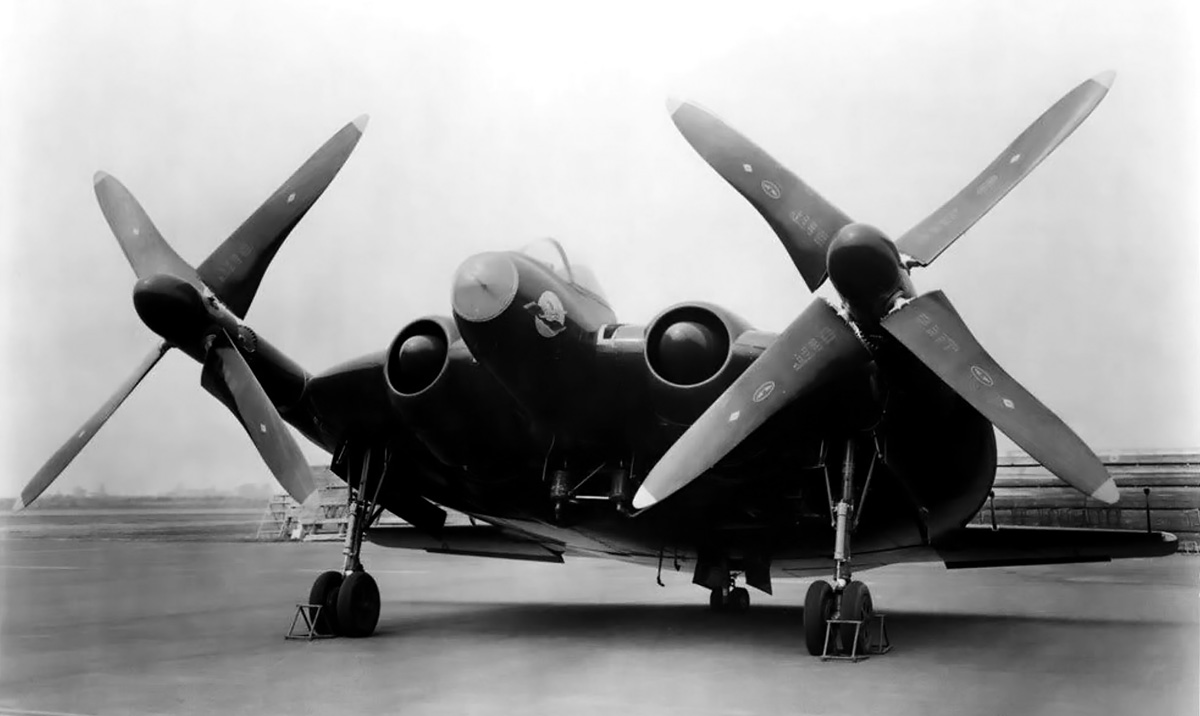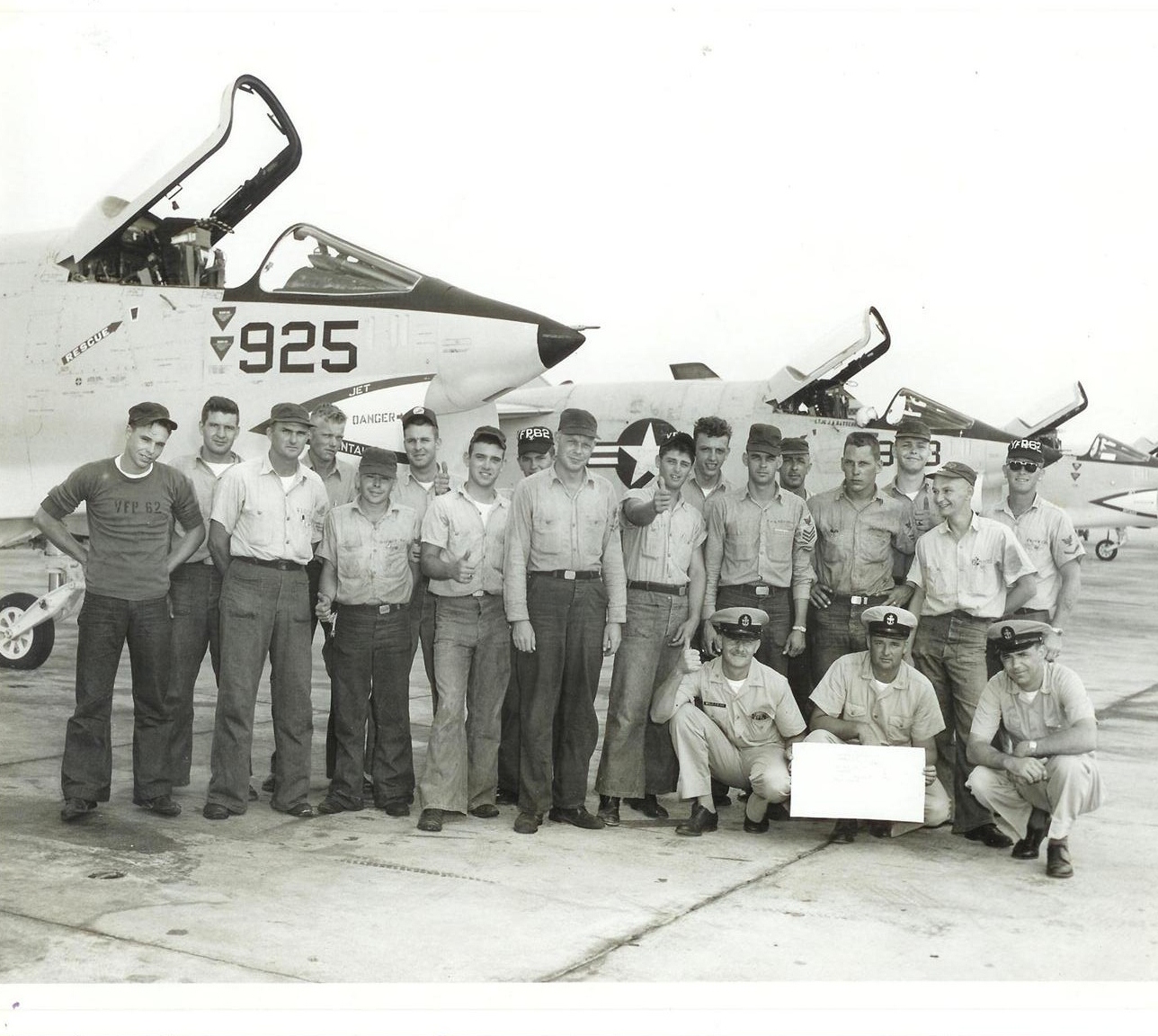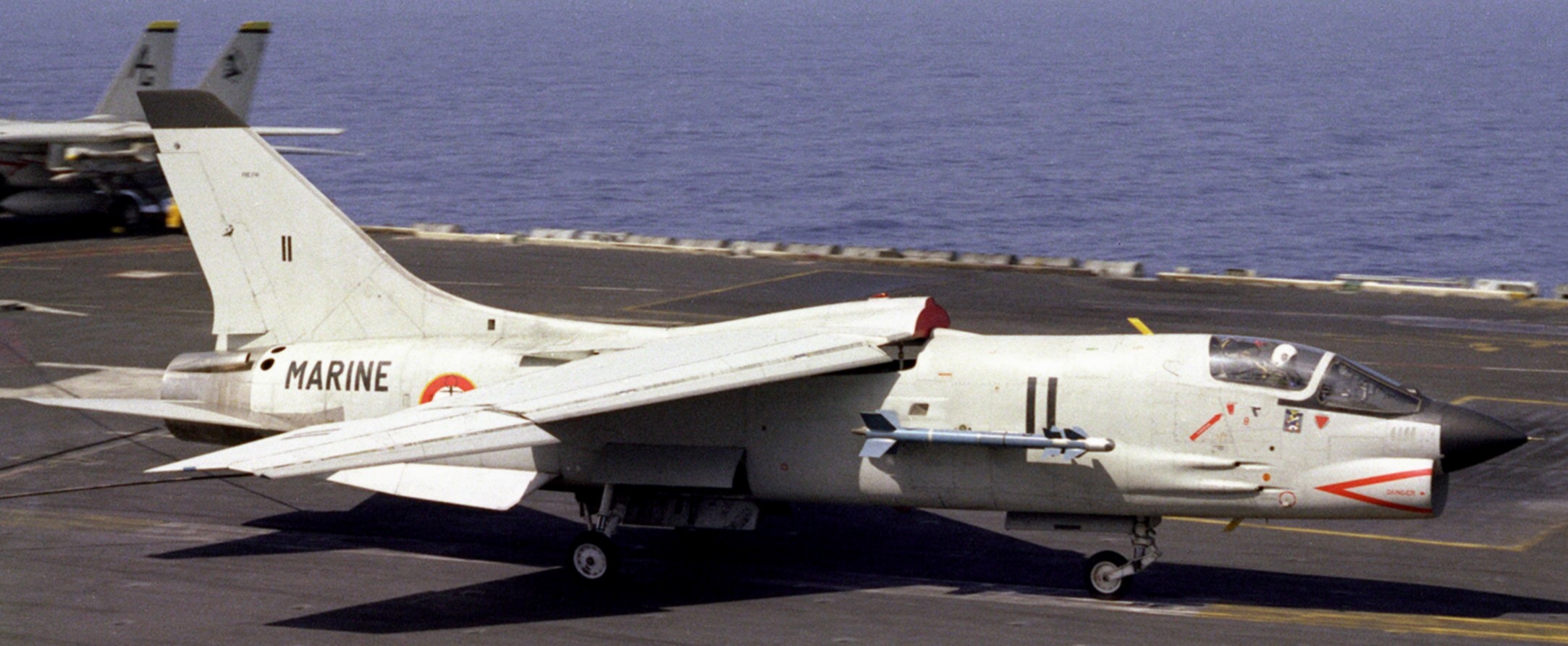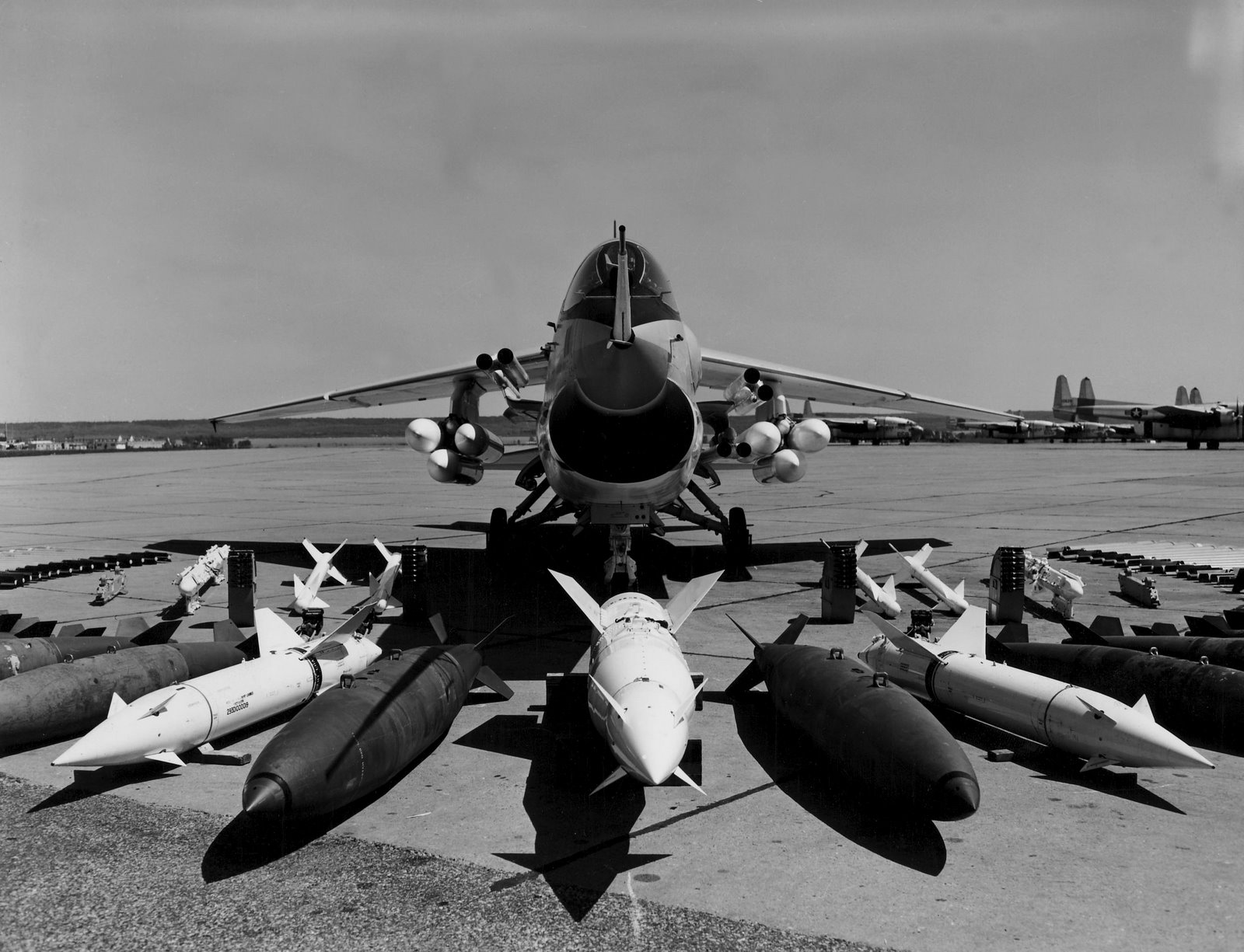The F-8 Crusader: Vought’s Last Chance
(Most of the historical information in this thread is from Barrett Tillman’s MiG Master. Technical and other information will be from documents, and any other information not pertaining to the Crusader is from online sources. I tried my best to stray away from online sources, except for images and photographs.)
The F-8 Crusader was by far one of the greatest fighters of its era. Fast, agile, potent, it had what it took to defeat an incoming opponent with a combination of guns and missiles. Unfortunate consequences of time would also prove itself capable of destroying ground targets, as was common among its contemporaries. The Crusader, despite its abilities and technologies, became one of the greatest forgotten aircraft of the Vietnam War. Outshone by the F-4 Phantom, and far from the spotlight that the UH-1 received, the unassuming Crusader’s story begins with uncertainty and ends with a seemingly unostentatious ceremony.
Historical Context

The ubiquitous F4U Corsair in all of its glory.
The F-8’s story can be traced all the way back to Vought’s F4U Corsair. While the Corsair was not objectively the greatest aircraft of the Pacific, it helped cement Vought as a formidable contractor for the US Navy. The Corsair would also see adoption by many other foreign militaries, including France. To build upon the legacy of such an aircraft would be a daunting task, and one that Vought was soon realized unable to do so.

Absurd and overbudget, the XF5U-1 didn’t take off. Literally.
The first of Vought’s aircraft to succeed the Corsair was the XF5U-1. Known now as the “Flying Flapjack”, the aircraft was notable for its unusual circular wing. The aircraft never went beyond trials due to being plagued with engine problems which led to an inability to fly. Past deadline and over budget, the XF5U would be the first in a line of failures.

A very nice looking aircraft the F6U Pirate was. Unfortunately poor performance is not attractive.
The next of Vought’s aircraft would be the F6U Pirate. As the world made the switch from prop to jet, Vought followed suit and designed the Pirate as a naval jet fighter. On paper, when compared to contemporaries such as the FJ-1 and FH-1, the Pirate was no different from other US Navy jet designs. However, an underperforming and strong aerodynamic deficiencies put the nail in the coffin for this design. Despite being the first Navy aircraft with an afterburning engine, other designs would be accepted for service, culminating in the adoption of Grumman’s Panther.

The design of the “Ensign Eliminator” was capable of giving pilots spinal injuries.
The next step seemed like a beacon of hope for Vought. The F7U Cutlass was once again a radical new design. Tailless with afterburning engines, it was unlike anything the US military had seen. Accepted after a design competition, the “Gutless Cutlass” was the first of Vought’s fighters since the Corsair to be placed into meaningful production. However, the unorthodox design would be troublesome for most pilots, and the unreliable hydraulic system would add to its high accident record.
At this point, the US Navy realized that Vought may no longer be the go-to contractor for their aircraft. By 1951, two of their designs had been complete failures, and their most recent one was just adopted and already had an abnormally high accident record. However, all was not yet lost as in July 1952, the Navy began a design competition for a day fighter. Weary of the prospects of a swept wing aircraft (a swept wing would diminish an aircraft’s low speed performance, necessary for carrier landings), the US Navy would be hesitant of any design incorporating one. By September 1952, the US Navy sent 15 bid requests, and received a total of 8, Chance Vought included. Vought’s design was a departure from their history of unorthodox designs. Much to the dismay of the US Navy, their design incorporated a swept wing. Knowing about the shortcomings of this, Vought incorporated a variable incidence wing, which would bolster the aircraft’s low speed performance for landing. Vought also put a great emphasis on technology, using modern alloys in the aircraft’s construction and modern electronic wiring techniques. The aircraft was powered by Pratt & Whitney J57, the most powerful turbojet available at the time. It was clear that in giving it their all, Vought was not only designing a day fighter for the Navy, they were designing the Navy’s first air-superiority fighter. In 5 month’s time, the design was ready to go.

Chance Vought wins the contract. I presume the Grumman submission was the F-11 Tiger.
On May 6th, 1953, Vought’s design was deemed the winner (and in hindsight, this was a no-brainer). 19 days later, the US Air Force’s F-100 would make its first flight and later would break the sound barrier in level flight. Following the win of the contract, it took Vought only 21 months to get a prototype available for flight. The target of this test flight would be the F-100, the closest aircraft in comparison to the XF8U. The F-100 was a heavy fighter-bomber, the XF8U a light and pure fighter. Both were powered by the J57. If the Super Sabre could break Mach 1, the Crusader would have no issue. On March 25th, 1955, with test pilot John Konrad at the helm. The XF8U-1 took flight, and returned 52 minutes after takeoff. The result? Almost Mach 1.1. Vought’s hard work paid off, and the Crusader was here to stay.
The adoption of the Crusader was not without teething problems. One of the biggest issues encountered early on were with landing on Essex-class carriers. The short runway gave pilots little room for error, else risking a ramp strike or taking a dip into the ocean. Fortunately there were solutions. The technical solution was the auto-throttle control, and the practical solution was to cut the right thumb off the pilot’s glove to gain full use of the trim controls. Spin characteristics were also an issue, though the Crusader’s aerodynamics would give enough warning to the pilot to either correct, or once in a spin ample time to either eject or attempt to regain control.

The XF8U-1 was a great depature from Vought’s other wacky designs. Sleek and fast, it had everything the Navy wanted.
Once the Crusader had proven itself to its pilots, it was time for the pilots to prove the capabilities of the aircraft. One such event happened early on in the aircraft’s career. On August 21st, 1956, “Duke” Windsor took off to set a speed record using the F-8. Apparently he was advised not to set the absolute record in order to conceal the aircraft’s true top speed. The resulting average speed was 1,015 mph, or about Mach 1.33. Not enough to beat the record, but enough to cement it as the first American production aircraft to reach 1,000 mph. Another event happened with Robert G. Dosé at the controls. From a standing start, he reached 40,000 feet in roughly 2.5 minutes. By the time the F-8 was well in service, the aircraft was rated for a Mach 1.7 top speed. All this coupled with the praise pilots gave about the aircraft’s dogfighting capabilities made for a “deployable” counter for any Soviet air threat. However the Crusader had yet to be proven in combat, and that was soon to change.

VFP-62’s RF-8A were the first case of deployed Crusaders.
The Crusader’s first combat deployment wasn’t even a combat deployment at all. RF-8As (recon model) from VFP-62 were tasked with gathering photos of the ever-developing Cuban Missile Crisis. After Rudolf Anderson was killed when his U-2 was shot down over Cuba, it was deemed the RF-8A was the only available aircraft able to perform this task in time. Proven, the Crusader was now ready for war in the Far East.
There’s a lot to be said about the Crusader’s history in Vietnam. For brevity’s sake, I will cover only three parts: Performance, kills, and reliability. The Crusader, initially believed by pilots to be the ultimate dogfighter, was realized to have no room in the airspace above Vietnam. Whilst proving itself successful against air targets, the war quickly shifted its focus into the ground attack role. Most aircraft were modified to carry ordnance, and the Crusader was no exception. The proud fighter of the Navy was no more than a “fighter-bomber with superb flight characteristics” now. Fortunately in the few air encounters that persisted, the modified Crusaders still proved themselves more than capable of dealing with air targets.

Mix and match, anything was fair game.
The title “The Last of the Gunfighters” was no more than a slogan. The primary weapon system of the Crusader were its missiles. In fact, without proper maintenance, the guns were notoriously unreliable, capable of jamming in forces greater than 1g. The ammo was also limited, which led to a field-modification-turned-accepted-maintenance-procedure, which allowed pairs of guns to be fired independently. The use of the AIM-9 was hampered by inconsistent training. Most pilots launched single missiles, which led to some prospective kills being turned down by evasive maneuvers or by failure of the missile itself. Seasoned pilots realized that a salvo of two missile greatly increased the kill chance, but the number of encounters did not equal the playing field. By the end of the war, the Crusader had claimed a 19:3 kill-loss ratio, 4 with guns, 14 with missiles, and one seemingly purely driven by fear of the Crusader.

Show here being rearmed, the Crusader was no stranger to maintenance.
The reliability record of the F-8, though issues were corrected early on,still had numerous accidents. 83 Crusaders were written off a DBR, along with an additional 109 requiring rebuilds. While the total loss ratio compared to the F-4 was marginally better, it is important to note that an F-4 down an engine can still be fully recovered, while a Crusader down an engine is usually a crash. With the delicate handling of the F-8 and the ever-changing needs of the brass, the F-8 was slowly and unceremoniously retired from service. By the end of the Vietnam War, all F-8 units had traded in their Crusaders for the more ground attack-oriented F-4 Phantom. The age of the Last Gunfighter was over.

The French Navy did not treat the Crusader as a fighter-bomber.
At least for the USN, that is. The French Navy had received their own F-8E variant, known as the F-8E(FN). Many changes from USN aircraft were carried over, along with some improvements. Most notable improvements included the upgraded AN/APG-104 radar, Boundary Layer Control, and modified control surfaces to protect against damage from the Matra R.530’s booster. Airframe Change No. 525 called for the removal of the AN/AAS-15 IRST from the aircraft, though I am not sure how many aircraft this applied to. Funnily enough, France bought Crusaders to replace their older Vought aircraft, the Corsair. The French aircraft lasted until 1999.

F8U-3 is accepted. The text on the right reads: “Not a competition. proposal for a/e. requested from Chance Vought - Grumman submitted unsolicited proposal at same time, approx.” The Grumman design is most likely the Model 118.
Before I go into the technical details of the F-8, I would like to point out two variants of it. First of which is the F8U-3 Crusader. The F8U-3 was more or less a dedicated interceptor version of the Crusader. With the ability to carry 3 Sparrow missiles, and the J75 engine mounted allowed the aircraft an incredibly high service ceiling. Sources dispute the demonstrated top speed, anywhere from Mach 2.3 to 2.6, with a projected top speed of at least Mach 2.9 with improved windscreen materials and other changes. The second variant begins as Vought’s Model V-456 “Attack Crusader”. With an improved wing design, the Attack Crusader had a greater strike capability. The base design remained on paper, though improvements to it would later lead to the LTV Corsair II.
Technical Information
To keep this part simple, I will keep the information to modules that are found in War Thunder. I will also keep information as concise as possible, sticking to names and values rather than descriptions, and also using the 1962 aircraft designations when applicable.
Radar
F-8A - AN/APG-30A
F-8B - AN/APS-67
F-8C - AN/APS-67
F8U-3 - AN/APQ-74 (Part of the AMCS Aero IB system)
F-8D - AN/APQ-83
F-8E - AN/APQ-94
F-8E(FN) - AN/APQ-104
F-8H - AN/APQ-149
F-8J - AN/APQ-124 or AN/APQ-124A

Here’s the AN/APQ-124. Note the radar display, the rectangular aperture was adopted during F-8E production.
Ejection Seat
The F8U-1 was originally designed with an in-house ejection seat, though shortly after production commenced, it was replaced with the Martin-Baker MK-F5 ejection seat. This would later be changed to the MK-F5A, and later the MK-F7. This is applicable to all aircraft.

The MK-7A in all of its glory. Make sure you’re wearing your Martin-Baker color-coded leg restraint garters.
Fuel
Fuel is either JP-4 or JP-5
F-8A - 514+170+589=1,273 gal.
F-8B - 514+170+589=1,273 gal.
F-8C - 535+170+568=1,273 gal.
F8U-3 - 617+746+673=2,036 gal.
F-8D - 514+245+589=1,348 gal.
F-8E - 514+245+589=1,348 gal.
F-8E(FN) - 514+245+589=1,348 gal.
F-8H - 513+263+572=1,348 gal.
F-8J - 513+263+572=1,348 gal.
Fuel stores as seen on the F-8J.
Engine
NOTE: Do not use these values for bug reports. Gaijin uses an in-house calculator to determine aerodynamic loses. These values are at SSL.
F-8A - J57-P-4 - 8,700 (lbf., normal) / 10,200 (lbf., military) / 16,000 (lbf., max)
F-8B - J57-P-4A - 8,700 (lbf., normal) / 10,200 (lbf., military) / 16,000 (lbf., max)
F-8C - J57-P-16 - 9,150 (lbf., normal) / 10,700 (lbf., military) / 16,900 (lbf., max)
F8U-3 - J75-P-6 - 14,900 (lbf., normal) / 16,500 (lbf., military) / 26,000 (lbf., max)
F-8D - J57-P-20 - 9,150 (lbf., normal) / 10,700 (lbf., military) / 18,000 (lbf., max)
F-8E - J57-P-20 - 9,150 (lbf., normal) / 10,700 (lbf., military) / 18,000 (lbf., max)
F-8E(FN) - J57-P-20A - 9,150 (lbf., normal) / 11,400 (lbf., military) / 18,000 (lbf., max)
F-8H - J57-P-420 - 9,150 (lbf., normal) / 12,400 (lbf., military) / 19,600 (lbf., max)
F-8J - J57-P-420 - 9,150 (lbf., normal) / 12,400 (lbf., military) / 19,600 (lbf., max)
Couldn’t find a good diagram of the J57, so here’s a random photo I found online.
Armament
The information here will be somewhat blended together. Rather than saying what each model was capable of, this will be more of an overarching “it had this” section.

At this point, what can’t you put in the Crusader?
Guns
The Colt MK 12 20mm cannon is what gives the Last Gunfighter its guns. Unreliable, but sure to dispatch a MiG. The guns could be fired either simultaneously, or in upper and lower pairs with the correct modification. Standard ammo count totaled 500 rnds.
A2A Missiles
The Crusader could be armed with 2 or 4 Sidewinder missiles. The AIM-9B and AIM-9D could be carried on all aircraft. The AIM-9C could only be used on aircraft with the CP-742 Deviated Pursuit Computer with required radar. The AIM-9G could only be used on aircraft that had the AN/ASA-63A SEAM (Sidewinder Expanded Acquisition Mode) System. A single F-8H was demonstrated with stores for the AIM-95 Agile, with a total of 4 missiles. The F8U-3 was demonstrated to carry 3 Sparrow missiles. Standard load was 3 AIM-9D and 1 AIM-9C, though the AIM-9C was seemingly never used.
A2G Missiles/Rockets
The Crusader was originally designed with an internal rocket pod that would carry 32 2.75" FFAR rockets. This tray was soon dropped. The 5" Zuni rockets could be carried in 2-unit packs, with a total of up to 8 rockets. Rocket pods included 7-count FFAR pods, 19-count FFAR pods, and 4-count Zuni pods. AGM-12 Bullpups could be carried on any aircraft with the required guidance system.
Bombs
The Crusader, with the upgraded wing, could carry a variety of bombs. MK 81, MK 82, (the former both Conical and Snakeye) MK 83, MK 84, and M117A1 bombs could be carried. Fire bombs include MK 77 MOD 2, MK 77 MOD 4, and MK 79 MOD 1. Cluster munitions include MK 20 Rockeye II, CBU-24, CBU-29, and CBU-49.
The Crusader in War Thunder
This is the part where you have to deal with my opinion. Before I got the F-8C (called F8U-2 in-game), I had barely gotten through the American tech tree. My highest BR plane was the F-5E, and that’s an entirely different class of plane. The Demon was fun but underwhelming, the Sparrows almost a joke. By the time I got the F-8C, I had developed my playstyle for slow planes and straight-line fighters. The F-8C clearly had no room in my style, and the early teething problems I had with it were proof. However, the maneuverability of the aircraft stuck out to me. This was the first aircraft I dealt with in a long while where I could outmatch most of my opponents. Of course, I also realized how fragile the wings were so it was hard to push the airframe. The AIM-9B might seem well out of place at a 10.0 BR, but it still was surprisingly useful. Emphasis on the was, as the AIM-9D is better in every way possible. Smaller seeker, better motor, longer range, higher pull, almost anyone caught without flares was a goner. The AIM-9D proved itself to me after one killed an F-4EJ that was launching flares like no tomorrow.

The F-8C is fast and fragile.
The F-8E, despite basically being the same aircraft at 10.3, also had a new set of challenges. Radar was never my strong suit, since the Demon barely taught me anything. However I knew what the benefits of the AIM-9C were. It took me some time, and many poor attack angles, but I mastered the radar and the missiles. Once this hurdle was surmounted, everything else fell into place. The improved engine and stronger wing made the maneuverability of the F-8E completely unmatched. Not only could I sustain a turnfight better than most of my opponents, it was comical how fast I could out-turn them. The low speed handling of the F-8E is beyond phenomenal.

I’ve called this loadout the “MiG-Master”. Two of each missile.
Unfortunately I do not have the F-8E(FN), so I can’t give much of an opinion on that. Though I would assume that an F-8E with Matras is quite an opponent. However, this is also to say that, after I spaded both the F-8C and F-8E, I was at a loss. The next aircraft on the chopping block was the F-4J, and to say it was underwhelming in my opinion is an understatement. The slow, lumbering Phantom felt like a brick to me. Armed with only 2 AIM-9Ds and a gunpod at 11.3 felt like a cruel joke. On top of this, any other aircraft I played never gave me the feeling of control the F-8 did. The F-16, while incredibly fast and maneuverable, does not have the airframe strength that the F-8 does (I’ve been put into an unrecoverable flat spin twice with negligible damage to my wing).
Conclusion
The Crusader was designed as an air-superiority fighter from the ground up, and the aircraft you see in-game reflects this. Unfortunately, the lack of worthy immediate successor makes the aircraft stand out. A lot of the information provided here is only scratching the surface. There are many specific that I can dig up if necessary, though some of it was cut out because I felt like I lost where I was going when writing this up. I was originally going to go in-depth on the avionics, though there was quite a bit of uncertainty, especially with the Sidewinder’s computer. I also realized that I am definitely more of a talker than a writer, so don’t expect more posts like this. If you have any questions, comments, or things I should change/rewrite, please let me know.